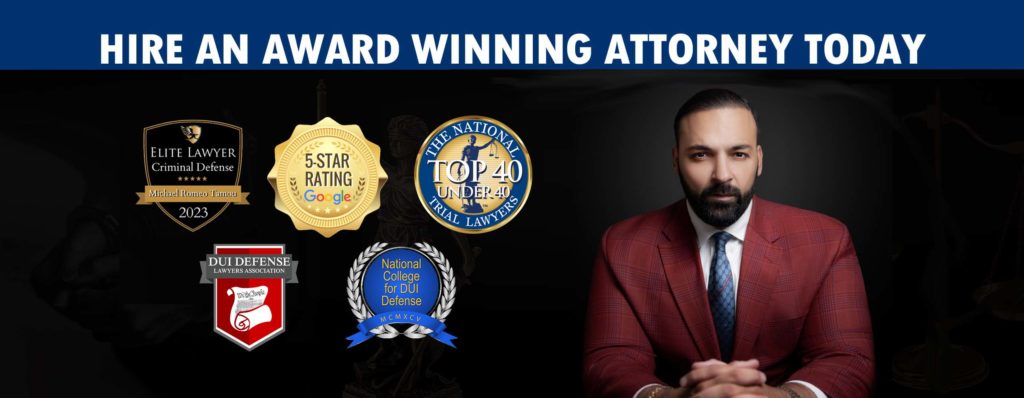Felony Sentencing in Arizona – How Does it Work?
Below you will find a sentencing chart for Arizona (2020-2021). In Arizona, felony sentencing is governed by strict laws that ensure consistency while allowing some discretion for judges based on individual circumstances. This means that a judge must issue a sentence within a predetermined range set by law, but factors specific to the defendant and the crime may influence the final outcome.
Arizona distinguishes between “dangerous” and “non-dangerous” felonies, and each type of felony has specific sentencing guidelines based on its severity, class, and the defendant’s criminal history. Below is a breakdown of how felony sentencing works in the state, including what the tables mean, and how various factors come into play when determining a sentence.
Felony Classes in Arizona
Felonies in Arizona are divided into classes from 1 to 6, with Class 1 being the most serious and Class 6 the least serious. Each felony class comes with a range of possible sentences, and the severity of the crime dictates which class applies. For example, Class 2 felonies might involve violent crimes, while Class 6 felonies could be less severe offenses like certain types of theft or property damage. When the Judge decides the amount of time that a Defendant must spend in prison (unless stipulated), they use the Arizona Felony Sentencing Guidelines.
How to Read the Felony Sentencing Chart
The tables for felony sentencing categorize crimes based on their severity and provide different ranges of penalties depending on whether the crime is considered dangerous or non-dangerous, and whether the defendant is a first-time offender or has prior felony convictions.
Each row in the chart shows different levels of sentencing:
- Mitigated: The least severe punishment.
- Minimum: The lowest possible sentence unless mitigating factors are found.
- Presumptive: The “default” sentence, considered the standard.
- Maximum: A higher sentence that may apply in more severe cases.
- Aggravated: The harshest sentence within the range, reserved for the most serious circumstances.
The judge will typically issue a “presumptive” sentence unless there are mitigating or aggravating factors that justify adjusting it down to the minimum or up to the maximum/aggravated range.
Dangerous vs. Non-Dangerous Crimes
A “dangerous” crime in Arizona refers to any offense involving a deadly weapon or dangerous instrument, or the intentional infliction of serious physical injury. When a crime is classified as dangerous, it increases the potential sentence significantly. Non-dangerous crimes, on the other hand, do not involve these elements and have lower sentencing ranges.
The sentencing chart is split into sections for dangerous and non-dangerous offenses. For example, a first-time offender convicted of a non-dangerous Class 2 felony could face a sentence ranging from 3 to 12.5 years, whereas the same felony classified as dangerous could carry a minimum sentence of 7 years and go as high as 21 years.
The Importance of Criminal History
Arizona’s sentencing laws are also heavily influenced by the defendant’s prior convictions.
- First-time offenders convicted of non-dangerous felonies often have the opportunity to receive probation rather than prison time. Judges may still impose jail time (up to 12 months) as part of probation, but first-time offenders usually have more lenient sentencing ranges.
- Repeat offenders face stricter penalties. The more prior convictions a defendant has, the less likely they are to receive a lenient sentence. For example:
- Category 1 offenders have one prior non-historical felony or multiple offenses charged within the same complaint but on different dates.
- Category 2 offenders have at least one historical prior felony or multiple non-historical priors.
- Category 3 offenders have two or more historical priors, leading to the strictest sentencing.
For repeat offenders, even non-dangerous felonies can lead to mandatory prison time, with sentencing ranges that increase with each category of prior felonies.
How Probation Affects Sentencing
Probation can affect sentencing outcomes, especially for first-time offenders. If a defendant is convicted while already on probation for a prior felony, the judge must issue at least the presumptive sentence for the new conviction, and cannot reduce the sentence to the minimum or mitigated ranges.
However, probation remains an option for non-dangerous first-time offenders, with the possibility of serving no prison time if the judge deems it appropriate.
Mitigating and Aggravating Factors
Judges consider mitigating and aggravating factors when determining sentences. These factors can push the sentence down toward the minimum/mitigated range or up toward the maximum/aggravated range.
- Mitigating factors might include the defendant’s age, minor participation in the crime, or being under duress at the time of the offense. These factors, if present, allow the judge to reduce the sentence. The law requires at least one mitigating factor for a sentence to be reduced to the minimum, and two for it to reach the mitigated range.
- Aggravating factors include the use of a deadly weapon, infliction of serious injury, or committing the crime in an especially cruel manner. Just like mitigating factors, the presence of one aggravating factor can increase a sentence to the maximum, and two are required to impose an aggravated sentence.
These factors are crucial in sentencing, as they can significantly impact the amount of time a defendant spends in prison or on probation.

Non-Dangerous, First Felony Offense (§ 13-702(D))
| Felony Class | Mitigated | Minimum | Presumptive | Maximum | Aggravated | Max Probation |
|---|---|---|---|---|---|---|
| Felony 2 | 3 | 4 | 5 | 10 | 12.5 | 7 |
| Felony 3 | 2 | 2.5 | 3.5 | 7 | 8.75 | 5 |
| Felony 4 | 1 | 1.5 | 2.5 | 3 | 3.75 | 4 |
| Felony 5 | 0.5 | 0.75 | 1.5 | 2 | 2.5 | 3 |
| Felony 6 | 0.33 | 0.5 | 1 | 1.5 | 2 | 3 |
*Note: Probation Eligible, 12 months jail possible as a term of probation
Non-Dangerous, Repetitive Felony Offenses
Category 1 – § 13-703(A), (H) (1 Non-Historical Prior; or 2+ Offenses in Same Complaint but Different Dates of Offense)
| Felony Class | Mitigated | Minimum | Presumptive | Maximum | Aggravated |
|---|---|---|---|---|---|
| Felony 2 | 3 | 4 | 5 | 10 | 12.5 |
| Felony 3 | 2.5 | 3 | 4 | 8 | 9 |
| Felony 4 | 1 | 1.5 | 2 | 4 | 5 |
| Felony 5 | 0.75 | 1 | 1.5 | 2.25 | 3 |
| Felony 6 | 0.5 | 0.75 | 1 | 1.5 | 2.25 |
Dangerous Offenses (§ 13-704)
First Dangerous Felony Offense (§ 13-704(A))
| Felony Class | Minimum | Presumptive | Maximum |
|---|---|---|---|
| Felony 2 | 7 | 10.5 | 21 |
| Felony 3 | 5 | 7.5 | 15 |
| Felony 4 | 4 | 6 | 8 |
| Felony 5 | 3 | 4 | 5 |
| Felony 6 | 1.5 | 2.25 | 3 |
One Historical Dangerous Prior (§ 13-704(B))
| Felony Class | Minimum | Presumptive | Maximum |
|---|---|---|---|
| Felony 2 | 15 | 17.5 | 21 |
| Felony 3 | 10 | 12 | 15 |
| Felony 4 | 8 | 10 | 12 |
| Felony 5 | 5 | 7 | 9 |
| Felony 6 | 3 | 4 | 5 |
Category 2 – § 13-703(B), (I) (1 Historical Prior, or 2+ Non-Historical Priors in Same Complaint but Different Dates of Offense)
| Felony Class | Mitigated | Minimum | Presumptive | Maximum | Aggravated |
|---|---|---|---|---|---|
| Felony 2 | 4.5 | 6 | 9.25 | 18.5 | 23 |
| Felony 3 | 3.25 | 4.5 | 6.5 | 13 | 16.25 |
| Felony 4 | 2.25 | 3 | 4.5 | 6 | 7.5 |
| Felony 5 | 1 | 1.5 | 2.25 | 3 | 3.75 |
| Felony 6 | 0.75 | 1 | 1.75 | 2.25 | 2.75 |
Category 3 – § 13-703(C), (J) (2+ Historical Priors)
| Felony Class | Mitigated | Minimum | Presumptive | Maximum | Aggravated |
|---|---|---|---|---|---|
| Felony 2 | 10.5 | 14 | 15.75 | 28 | 35 |
| Felony 3 | 7.5 | 10 | 11.25 | 20 | 25 |
| Felony 4 | 6 | 8 | 10 | 12 | 15 |
| Felony 5 | 3 | 4 | 5 | 6 | 7.5 |
| Felony 6 | 2.25 | 3 | 3.75 | 4.5 | 5.75 |
Two Historical Dangerous Priors (§ 13-704(C))
| Felony Class | Minimum | Presumptive | Maximum |
|---|---|---|---|
| Felony 2 | 21 | 28 | 35 |
| Felony 3 | 15.75 | 21 | 25 |
| Felony 4 | 12 | 14 | 16 |
| Felony 5 | 8 | 9 | 10 |
| Felony 6 | 5 | 6 | 7 |
Dangerous, Repetitive Felony Offenses (§ 13-704(F))
| Felony Class | Minimum | Maximum | Increased Maximum |
|---|---|---|---|
| Felony 2 | 10.5 | 21 | 28 |
| Felony 3 | 7.5 | 15 | 25 |
| Felony 4 | 6 | 8 | 12 |
| Felony 5 | 3 | 4 | 5 |
| Felony 6 | 2.25 | 3 | 4.5 |

Conclusion
Felony sentencing in Arizona involves many moving parts, from the type of crime and its classification to the defendant’s prior history and the presence of mitigating or aggravating factors. Understanding how these components interact helps clarify how judges determine sentences within the ranges set by Arizona law.
For anyone facing felony charges, it’s important to consult with a defense attorney from Tamou Law Group who can explain these guidelines in detail and work to mitigate the sentence by presenting the most compelling factors on your behalf. Contact us today for a free consultation at 623-321-4699.

